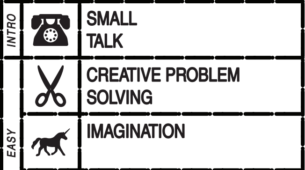In this critical play analysis, the focus is on a game that has existed for over two centuries: poker. Originating in the early 19th century in the French-influenced regions of the United States, poker was first played in New Orleans 1, 2. The version discussed here is the digital variant provided by 247freepoker.com, a platform developed by 24/7 Games LLC. Generally, the target audience for poker is individuals aged 21 and over, especially when real money or gambling is involved. To play poker at a reasonably competitive level, a certain degree of knowledge is essential. The game requires mathematical reasoning, an understanding of probability, and a touch of psychology and bluffing.
Poker is a classic game with a compelling mechanic: each player begins with partial knowledge, two private cards in hand, and gradually learns more as shared community cards are revealed. In the first round, three cards are dealt face-up on the table. In subsequent rounds, one additional card is revealed each time, culminating in a total of five community cards. Players must then make the best possible five-card combination using any mix of their private and community cards. This mechanic allows for a wide range of strategic combinations. For example, a player starting with a seemingly weak hand, like a 2 and a 3, might end up with a powerful combination such as three of a kind if additional 3s appear on the table. Figure 1 illustrates this scenario, where an initially weak hand becomes strong by the end of the round. This underscores a key insight: strong initial cards do not guarantee victory, due to the nature of diverse card combinations.

Another essential aspect of poker is its betting dynamic, which adds layers of psychological tension and bluffing. At the start of each round, a minimum bet is required by at least two players. Others must then choose whether to “fold”, “call”, or “raise”. This opens the door for players to bluff—betting aggressively with weak hands to intimidate others into folding. Figure 2 shows a player winning $213 in virtual currency with a straight, a powerful five-card sequence. This moment highlights poker’s Sensation aesthetic—the thrill of risk, the excitement of bluffing, and the surge of victory even when starting with an unpromising hand. That sensation grows with every win, every stack of chips earned, and even every unfortunate loss.

Beyond “Sensation,” two other aesthetic experiences are central to poker: Challenge and Submission. Each round presents a new opportunity to recover from past losses or outsmart opponents. The obstacles are not only the cards but also the psychology of opponents and one’s own greed for more money. For some, poker is primarily a “Submission” aesthetic—especially when real money is involved. This can be dangerous. The near misses, intermittent rewards, and monetary incentives create a potentially addictive loop, particularly harmful in gambling contexts.
Indeed, the gambling dynamics of poker have real societal impacts. Research indicates that individuals with gambling problems often experience higher levels of depression, impulsivity, and cognitive distortions3 . These issues are even more pronounced in younger players, who are increasingly exposed to poker online. One study found that approximately 2.9 million youths aged 14–22 engage in gambling activities, with over 580,000 doing so online4. Early exposure to gambling is strongly correlated with a higher risk of addiction later in life.
References
- Maskelyne, J. N. (2004). The Game of Poker. Project Gutenberg. https://www.gutenberg.org/ebooks/53881
- Parlett, D. (n.d.). Poker – a brief history. Retrieved May 23, 2025, from https://www.parlettgames.uk/histocs/poker.html
- Barrault, S., & Varescon, I. (2023). Problem gambling poker players: Do they fit into Blaszczynski and Nower’s Pathways Model? Journal of Gambling Studies, 39(1), 249–263. https://link.springer.com/article/10.1007/s10899-022-10123-9
- Boland, D. (2025, April 29). High school age kids now gambling on online casinos. Birches Health. https://bircheshealth.com/resources/high-school-gambling-online-casinos



